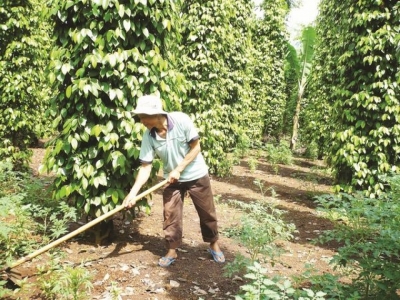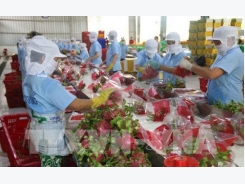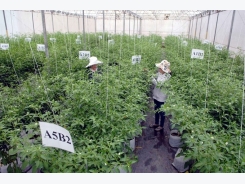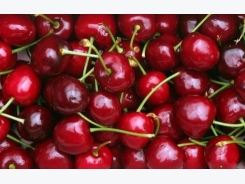Sustainable growth for pepper industry

From 2010 to 2017, the pepper industry has achieved speedy growth in both area size and productivity. However, this speedy growth has revealed serious consequences. If these consequences had not been removed they might have broken the industry, caused unmarketability, and reduced the product’s prestige.
Pepper industry needs to transform from race on area and productivity into race on quality.
"Speedy" but unsustainable
According to the report of the Department of Crop Production, Ministry of Agriculture and Rural Development, due to the demand of the world market, pepper area in our country in the period 2012 - 2017 increased very fast. If in 2010, the country only planted 51.500 hectares of pepper, in 2017 the area increased to 152.668 hectares. This has led to Vietnam becoming the leading country in pepper production and export. Until now, Vietnamese pepper has been exported to 109 countries and territories, mainly in Europe, Asia and America.
However, the pepper production in our country is also showing signs of instability, including the explosion of area usage and the outbreak of disease, shortcomings of quality control, production linkages and value chain development. The impact of climate change is considered as an unstable factors affecting the pepper industry. In 2014, the Ministry of Agriculture and Rural Development approved the master plan for the development of the pepper industry to 2020, with a vision to 2030. Accordingly, the total area of pepper production by 2020 will be 50,000 hectares. However, this year, the pepper area has been 3 times higher than planned.
According to the International Pepper Community (IPC), total global supply in 2017 will reach about 460,000 tons, an increase of 6-7% over 2016. Compared with the global demand growth (about 3% / year), the pepper supply is higher than demand. In 2018, although pepper productivity in some large production countries including Vietnam may decrease, the production area is still increasing, so total global supply in 2018 will be higher than 2017 and higher than demand. This will affect the export price of pepper and the efficiency of pepper production. Specifically, global pepper price in general and in Vietnam in particular, has continuously decreased in recent years. At present, Vietnamese pepper price is just over 60,000 VND / kg, close to the country’s average production cost of over 49,000 VND / kg.
In addition, the Vietnam’s pepper industry is facing the challenge of increase of the technical barriers of importing countries. According to the European Spice Association (ESA), the EU is particularly concerned about pesticide residues on agricultural products and has issued more specific regulations. The European Commission (EC) has announced the adjustment of the Metalaxyl MRLs (Minimum Residue Limits) from 0.1 ppm to 0.05 ppm; and proposed the WTO to raise the MRLs Metalaxyl index to 0.05 ppm for all pepper products imported to the EU. However, due to the reaction of Vietnam and India, the EC temporarily halted the adjustment and kept the MRLs Metalaxyl at 0.1 ppm until 2018. Moreover, the EU has paid a lot of attention to cross-contamination during the storage, transport, and distribution, as well as allergic and infectious substances to pepper due to incorrect methods increasing the risk of mineral oils contamination during transportation.
According to the American Spice Trade Association (ASTA), the US government is also changing some key points in the regulations for imports into its country. Accordingly, imported pepper products to the US will be not just controlled for the whole production from the production area, the export enterprises must also prove the quality of pepper via certified documents for each stage: materials - production – finished products - storage - transportation to the export market. This certification is issued by a third independent agency assigned by the FDA
Restructuring in the quickest way
Commenting on the Vietnam’s pepper industry, Minister of Agriculture and Rural Development Nguyen Xuan Cuong said that Vietnamese pepper currently accounts for more than 50% of world production but still can not control the market and is still unstable. Therefore, there is no other way except restructuring the pepper industry. The race for area and productivity will have to be transformed into the race on quality. Accordingly, the pepper area must be resolutely reduced in disadvantaged areas and serious epidemic areas move to other plants.
President of Vietnam Pepper Association Mr. Nguyen Nam Hai shared that in many aspects, Vietnam will still be the world's largest pepper exporter in the future, in which it can dominate the world spice market. Therefore, it is necessary to set up a pepper exchange so that Vietnam pepper can become a highly professional export industry from production to consumption while enhancing transparency, minimizing price and trade risks for both pepper farmers and exporters. At the same time, the Ministry of Agriculture and Rural Development should focus on the state management on the pepper seedlings. Such as, the recognition of seedlings and pepper seedling multiplication and gardens to produce high-quality seedlings for production; identify appropriate farming processes for each ecological sub-region. In particular, strengthening development of value chains should focus upon pepper production, by raising the responsibility of the Vietnam Pepper Association for this development.
According to the pepper processing and exporting enterprises, for sustainable development, the pepper industry needs to adhere to the production process to ensure food safety for export, while at the same time, enhancing the deep processing to diversify products, diversify the market and limit the risk of consumption. Provinces should have comprehensive solutions for sustainable development of the pepper industry, including planning, farming techniques, plant protection, post-harvest and market promotion.
The Pepper Association also said that the State should further improve the legal framework on chemicals used on pepper, review and quickly remove substances that are restricted or banned from import. Also, the training materials on pepper farming process should be completed in accordance with GAP standards and the content of PHI (Pre-Harvest Interval) for each plant protection product used on pepper should be improved; and maximum residue limits for certain pepper protection products must be in line with requirements of importing countries.
Vietnam’s pepper industry should also quickly connect with international organizations such as IPC, ASTA, ESA, International Organization of Spice Trade Association (IOSTA) and other organizations to share information about market demand and quality, in order to support Vietnam’s pepper production to meet international standards. In particular, it is necessary to organize the linkage of pepper production according to the chain with certification of growing areas, reduce the intermediary in purchasing raw materials to control the quality, and by meeting the requirements of large markets with good added value, such as for the US and EU.
Related news
Tools

Phối trộn thức ăn chăn nuôi

Pha dung dịch thủy canh

Định mức cho tôm ăn

Phối trộn phân bón NPK

Xác định tỷ lệ tôm sống

Chuyển đổi đơn vị phân bón

Xác định công suất sục khí

Chuyển đổi đơn vị tôm

Tính diện tích nhà kính

Tính thể tích ao




 Vietnam earns US$13 million from fruit and veg…
Vietnam earns US$13 million from fruit and veg…  Vietnam spends US$5.4 million a day importing fruit…
Vietnam spends US$5.4 million a day importing fruit…